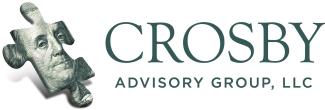
Monthly interest, benefit raise and a high income play
Why your monthly interest-paying money market is better than you might think
Both SEI and Charles Schwab have money markets that pay monthly interest. The money markets presently have an annual yield between 4.81% and 5.23%. However, because they pay interest monthly, the compounding actually results in a greater return. For example, let’s assume Scrooge McDuck deposited $50,000 into an account that yielded 5% and paid the interest annually. Assuming his interest rate remained unchanged, in five years Scrooge’s account would have grown to $63,814.
Scrooge's nephew, Donald, also deposited $50,000 into an account that had an annual interest rate of 5%, but instead of paying the interest annually, it paid interest every month (0.416% each month). Even though their annual yields were technically the same, Donald benefited from monthly compounding. Although they deposited the same amount of money, Donald’s account grew to $64,142 in five years, leaving Scrooge McDuck disappointed that he chose to count his gold coins rather than attend the Time Value of Money lecture in his math class.
Social Security Benefits Increasing
70 million Americans who are currently receiving Social Security benefits will get an above-average raise in 2023. Social Security benefits are scheduled to get a 3.2% increase. This increase could still lag real inflation. The September Consumer Price Index (CPI) rose by 3.7% over the past 12 months. Payments will automatically increase for the December 2023 the benefit and will be payable January 2024
HIGH to replace High Yield Bond Exposure
High yield bonds, or “junk bonds”, have lower credit ratings than investment grade bonds. Due to the lower credit rating and increased potential for default risk, high yield bonds pay higher interest than their investment grade counterparts. High yield bond funds can be attractive for those seeking higher current income, but high yield bond funds can be as volatile as stocks. In fact, high yield bond funds often act like stocks, losing value in down or bear markets. Often a portfolio manager will allocate 3-5% of a portfolio to high yield bonds with the hopes of juicing up the portfolio return while limiting downside exposure. Historically, Crosby Advisory Group has held a 5% high yield bond position in most of our strategies. However, with rising default rates, decreased liquidity and higher lending costs, we presently do not want any exposure to high yield bonds. However, we do want a segment of the portfolio to produce above investment grade yield. That can be a tough task considering 6 months treasury bills currently yield about 5.5%. We have chosen to utilize an ETF that parks most of its assets in treasury bills and then sells short-dated put and call spreads to generate additional income. The ETF’s ticker is HIGH and currently yields 9.5% based on his last monthly distribution and NAV (as of October 12, 2023). We believe the ETF has the ability to match high yield bond interest with less volatility. Presently HIGH represents a 5% position in most of our strategies.
Crosby Advisory Group, LLC specializes in wealth accumulation, asset protection, and business growth. If you have a question, contact one of our experts.
- Investing or planning: Nate Crosby
- Growing business revenue: Carly Snyder
- Insurance: Julie Maglott
Disclaimer: Crosby Advisory Group, LLC provides investment services, business growth strategies and insurance protection. This newsletter is for informational purposes and does not represent individual investment advice for your specific situation. Investing involves risk including the potential loss of principal. Crosby Advisory Group, LLC is a registered investment advisor.

